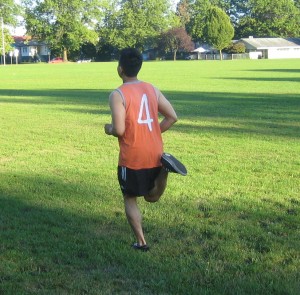Osteoporosis involves the weakening of the bones that can later on lead to fractures that usually occur in the hips, wrists and the spine. It is estimated that women over 50 years old are likely to end up with this debilitating condition and most can experience a bone fracture.
https://www.youtube.com/watch?v=jRSy_XGSGDI
There are prescription medications that have been proven to be effective in treating osteoporosis. Just remember that all drugs have their side effects including erratic heart rhythm, muscle and joint pain, esophageal tumors, unusual bone fractures and osteonecrosis of the jaw. At the present, various natural treatment options are available that can help prevent and manage osteoporosis. Before attempting to try out these natural remedies, it is best to consult a doctor first.
Getting enough exercise

Always bear in mind that exercise has been a natural and healthy step to take in order to slow down the progression of osteoporosis along with other health benefits. Engaging in weight-bearing exercise helps build and maintain the bone mass. Good examples of weight-bearing exercises include dancing, jogging, hiking, weightlifting and racquet sports. Aside from building up the bone density, exercise can also help strengthen the muscles and improve balance in order to prevent falls. If an individual sustained a fall, it is best that you are prepared to provide the appropriate first aid measures. All you have to do is to register for first aid training today.
Proper nutrition
It is recommended to maintain 1,000 mg per day of calcium for those 50 years and below while 1,200 mg per day for those over 50 years old. The diet must include high-calcium foods such as cheese, low fat milk, tofu, spinach, salmon, collard greens, sardines, ice cream and yogurt. Do not forget that vitamin D also plays an important role in how the body absorbs calcium, thus it is recommended to take 800-1000 IU of vitamin D in a day.
A healthy level of vitamin K can minimize the risk for bone fractures especially among postmenopausal women. Good dietary sources include spinach, broccoli, kale, cabbage, dark green lettuce, beef liver, asparagus and turnip greens.
Supplements
Calcium supplements are suitable for individuals who could not consume the recommended requirement of calcium through food. It is important to note that the body is capable of absorbing around 500 mg of calcium at a time, thus it is best to spread the intake of supplements throughout the day. Both calcium citrate and calcium carbonate are forms of calcium that are equally effective. For those who have low levels of stomach acid, calcium citrate is readily absorbed.
What must be avoided?
An individual who has osteoporosis should avoid diets that are rich in salt and protein. The consumption of excess protein can lead to the loss of calcium via the kidneys while eating excess amounts of salt can later on lead to bone loss. It is advised to limit or avoid caffeine, alcohol, soft drinks and smoking since these can reduce the calcium absorption.
